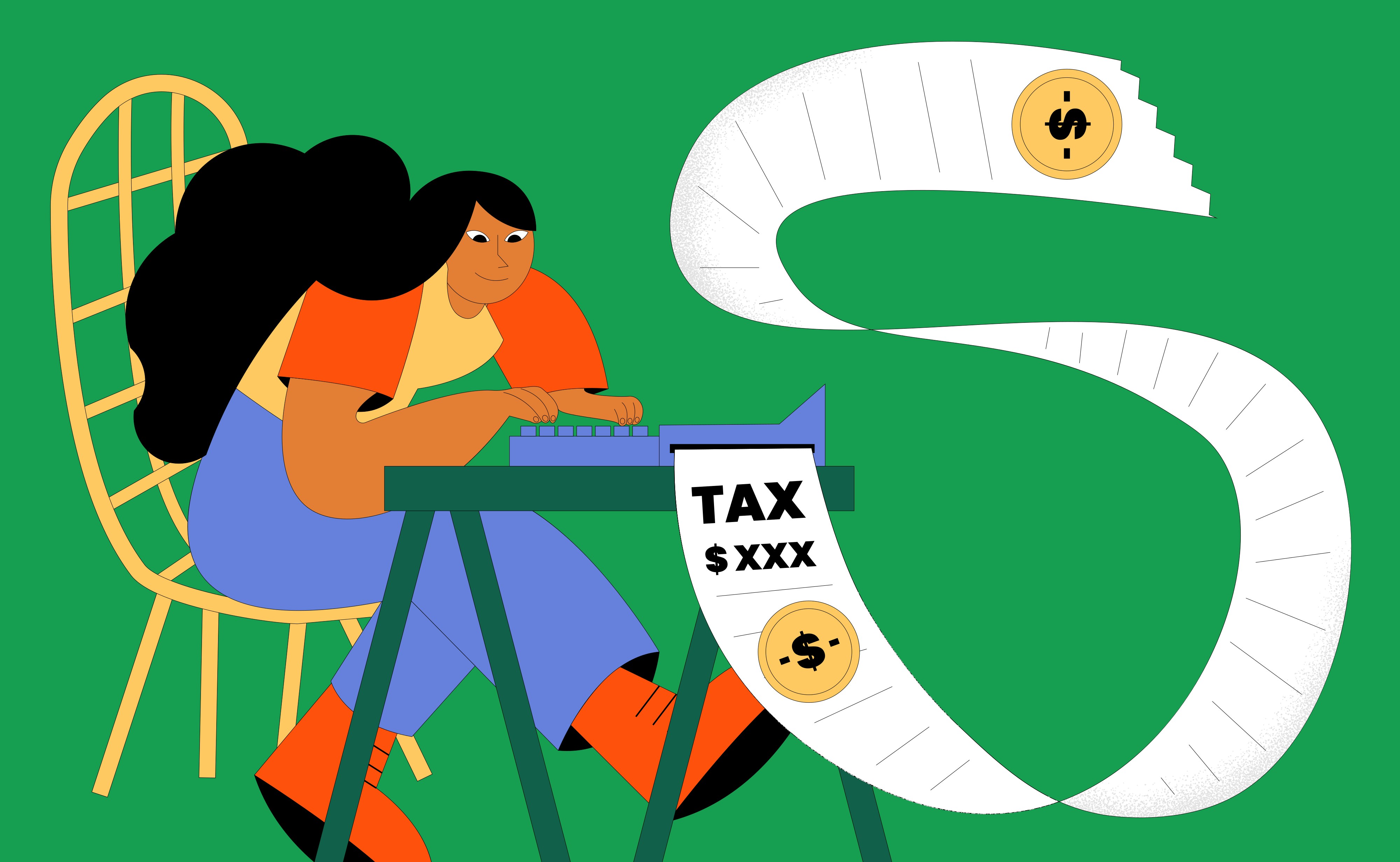A Roth IRA is a retirement account created under United States tax law that allows individuals to contribute after tax money today in exchange for tax free withdrawals in the future. To understand how it grows, it is useful to separate three elements that work together over many years. The first is the money you put in. The second is what you invest that money in. The third is the tax treatment that applies while the account is growing and when you eventually take the money out. The interaction of these three elements explains why the same dollar can look very different inside a Roth IRA compared with a regular taxable investment account.
When you contribute to a Roth IRA, you are using income that has already been taxed through the normal income tax system. There is no tax deduction when you make the contribution, unlike a traditional IRA where contributions may reduce your taxable income in the year you contribute. This might feel less attractive at first glance, but it sets up the main growth advantage of a Roth IRA. Because the account is funded with after tax dollars, all future qualified withdrawals of both contributions and investment earnings can be taken out free of income tax. In other words, you absorb the tax cost at the beginning so that growth later is not taxed again.
The most visible driver of growth in a Roth IRA is the investment return generated by the assets you hold inside the account. A Roth IRA is not an investment by itself. It is a container that can hold many different types of investments, such as stock index funds, bond funds, individual shares, or cash. If you choose conservative investments that earn low returns, the account will grow slowly even though the tax benefits are generous. If you choose a diversified mix of higher growth assets, such as broad equity funds, the account has more potential to grow significantly over decades, though it will also fluctuate more along the way. The Roth structure does not guarantee a particular return. It simply shields whatever return you earn from annual taxation.
Compounding is the quiet mechanism that turns steady contributions and reinvested earnings into a larger balance over time. Inside a Roth IRA, investment income in the form of dividends, interest, and capital gains can be reinvested automatically without triggering tax in the year they are earned. In a normal taxable brokerage account, you may receive a tax form each year and owe income tax on these distributions, even if you reinvest them. That tax drag reduces the amount that can keep working for you. In a Roth IRA, there is no such annual tax friction as long as the money stays in the account. Dividends can buy more fund units, those units can appreciate, and any future gains on them continue to accumulate without annual tax. Over a working lifetime, this difference can be meaningful, especially for someone who starts contributing at a younger age and keeps a long term horizon.
Contribution limits also shape how a Roth IRA grows. United States tax law sets a maximum amount that an individual can contribute to a Roth IRA in a given tax year, with an additional catch up allowance for those who are age fifty or older. These limits are adjusted periodically. For someone who contributes the maximum every year, the account balance grows from both fresh contributions and the investment returns on the existing balance. For someone who contributes smaller, irregular amounts, the growth path will be more modest. In both cases, the Roth structure treats each dollar of growth the same way, but the volume and consistency of contributions determine how much capital is there to benefit from compounding.
Eligibility rules influence who can use a Roth IRA and therefore who can benefit from its growth pattern. There are income thresholds that determine whether you can contribute directly to a Roth IRA in a given year. Above certain income levels, direct contributions phase out or are not permitted. Some higher income earners may use a conversion strategy, moving money from other retirement accounts into a Roth, subject to tax on the converted amount. Once funds are legally inside the Roth IRA, growth is treated under the same tax free framework regardless of how they arrived. Policy wise, this structure is meant to encourage long term saving while placing some limits on who can receive the most generous tax benefits.
Another important feature is the absence of required minimum distributions for the original account owner. Traditional IRAs and many other retirement vehicles require you to begin withdrawing a portion of the balance each year after a certain age, and those withdrawals are typically taxed as ordinary income. A Roth IRA does not require such withdrawals during the lifetime of the original owner. This means the account can remain invested and continue compounding tax free well into retirement, or even for the rest of the owner’s life, subject to estate rules when it passes to heirs. From a growth perspective, this absence of forced withdrawals allows the investment horizon to remain very long, which generally benefits assets that are left to compound.
Withdrawals are another part of the growth story, because how and when you take money out affects how much stays inside to keep growing. Roth IRA rules distinguish between withdrawing contributions and withdrawing earnings. In general, you can withdraw your original contributions at any time without income tax or penalty because that money was already taxed before you deposited it. Earnings are different. To withdraw earnings tax free, you need to meet conditions such as being at least fifty nine and a half years old and having held the Roth IRA for at least five years, subject to specific exceptions. Early withdrawals of earnings can trigger income tax and potentially an additional penalty. These rules are designed to encourage people to leave the account intact so that the growth and compounding can do their work over the long term rather than treating the account as a short term savings pot.
The policy design of a Roth IRA shifts the timing of taxation rather than eliminating it entirely. You pay tax on the income before it goes in. In return, policymakers allow the future growth to escape taxation if you follow the rules. For a young worker at the beginning of a career, this can be attractive, because their current tax rate may be lower than the rate they would face later as their income and tax bracket rise. Locking in tax payment at a lower rate today can increase the real value of tax free withdrawals decades from now. For someone in a higher bracket today who expects to have lower taxable income in retirement, the trade off between a present day deduction through a traditional IRA and future tax free withdrawals through a Roth IRA may look different. In both cases, the way the account grows is shaped by this underlying tax timing choice.
Fees and investment costs also influence the growth path inside a Roth IRA. Even though the tax environment is favorable, high expense ratios on funds, frequent trading costs, or advisory fees can eat into returns. Over long periods, a one percent difference in annual net return can lead to a meaningful difference in the final balance, even in a tax free environment. For that reason, many investors who use Roth IRAs choose broad, low cost index funds or other vehicles with transparent fee structures. The tax benefit ensures that all net investment return after fees can compound untouched by income tax, but it cannot compensate for persistently high internal costs.
The timing of contributions matters as well. Contributing earlier in the year or consistently through the year gives each dollar more time in the market compared with waiting until the tax filing deadline to make a lump sum contribution. Over decades, this additional time in the market, even if it is only a few extra months each year, can add up. Some people align their Roth IRA contributions with monthly budgeting, treating it as a regular line item, which turns the account into a disciplined savings mechanism rather than an afterthought. When viewed over a thirty or forty year span, the habit of funding the account regularly is one of the most important drivers of growth.
It is also worth recognising that a Roth IRA grows not just as a private financial tool but as part of a broader retirement system. In practice, people often use a mix of employer sponsored plans, government benefits, and personal savings. The Roth IRA portion of that mix is the segment that aims to deliver tax free income later. Its growth allows retirees to have a bucket of funds they can draw from without increasing their taxable income in retirement. This can help manage their tax bracket, interact more favorably with other means tested benefits, and provide flexibility in years where they need extra cash for large expenses. In that sense, the way a Roth IRA grows over time has both a numerical and a policy impact, because it interacts with how retirees experience the tax and benefit system as a whole.
When people search for how does Roth IRA grow, they are usually trying to decide whether it is worth prioritising this account over other options. The answer lies in understanding that growth in a Roth IRA is a partnership between your contributions, your investment choices, and the tax rules that surround the account. The government provides a framework that allows earnings to accumulate without annual tax, in exchange for limiting access and setting clear eligibility and withdrawal conditions. If you use that framework consistently, keep costs reasonable, and allow enough time, the Roth IRA can become a powerful source of tax free income in retirement. As with any retirement decision, it makes sense to consider your own tax bracket, time horizon, and overall mix of savings vehicles, and to seek professional advice where needed, but the underlying mechanics of growth in a Roth IRA remain the same.






.jpg&w=3840&q=75)







